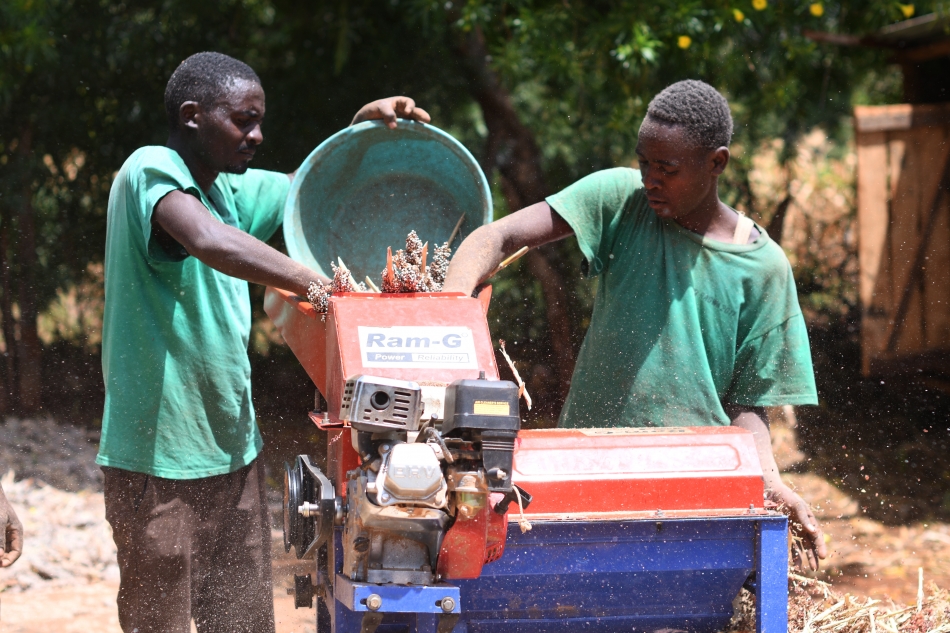
Farmers use a sorghum threshing machine. (Photo: fao.org)
More than 15,000 sorghum and bean farmers in Kenya have found market power in selling their products through groups of between 15 to 30 members.
Before forming collective marketing groups in 2015, farmers were selling a kilo of sorghum for Sh25 but after joining hands together, they are now selling a kilo at between Sh32 to Sh50 as reported by the Food and Agriculture Organization of the United Nations.
FAO says that farmers who join cooperative societies to market their products are more likely to double or triple their income due to improved bargaining power.
“We came together so as to realize profits for our business after FAO conducted training on conservation agriculture,” said Purity Gatiria, one of the farmers in Tharaka Nithi.
Related News: EABL pays Sh1.5bn to its 60,000 small-scale sorghum farmers in the region
Related News:Government asks farmers to grow millet, sorghum, cassava, and amaranth for blending with maize flour
Related News: KBL to distribute grain threshing machines to entice Nyanza farmers into sorghum farming
Purity and members of her group are now harvesting more than one tonne of sorghum up from 100kg after learning techniques on handling post-harvest losses, how to better select and package produce, and how the measurement of moisture content.
The farmers have also opened bank accounts to save money in a bid to better manage their finances.
“We are saving small quantities of money and this has enabled us to buy a motorbike to transport our produce to the market,” said John Kirugi, who is one of the farmers in Purity’s group.
In Kenya, cooperative societies have employed more than 300,000 people in various sectors dominantly in the agricultural industry. The society’s turnover was Sh436bn representing 45 per cent of the gross domestic product (GDP) according to data from the Kenya National Bureau of Statistics.